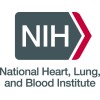
Patterns of Fatty Acids in Framingham Offspring
Cardiovascular DiseasesHeart Diseases2 moreTo study the absolute concentrations and percent of fatty acids in 480 plasma samples from an age and sex stratified random sample of subjects in the Framingham Offspring Study in order to calculate the distribution of fatty acids in this general population and to determine the inter-relationships among levels of fatty acids, in particular w3 and w6 fatty acids, with lipoproteins and apolipoproteins.

Pediatric Epidemiology of Cardiovascular Disease Risk Factors (Project Heartbeat)
Cardiovascular DiseasesHeart Diseases1 moreTo conduct a longitudinal, natural history study of cardiovascular disease risk factors in children. Growth curves were compared for levels of blood pressure, lipids, cardiac structures and function, and related to physical growth and maturation, nutrient intake, physical activity, body composition, puberty, and smoking.

Human Lipoprotein Pathophysiology - Subproject: Genetics of Familial Combined Hyperlipidemia
AtherosclerosisCardiovascular Diseases4 moreTo conduct focused studies of lipoprotein physiology and pathophysiology in genetically characterized patients with the objectives of understanding disease mechanisms, developing better treatments, and identifying and preventing early vascular disease.

Computed Tomography (CT)--An Epidemiologic Study in the Young
Cardiovascular DiseasesCoronary Disease2 moreTo investigate the relationship between coronary heart disease risk factors and coronary artery calcification in middle age adults from the Muscatine Study. From 1992 through 1995, ultrafast computed tomography was used to measure coronary artery calcification. The study has been extended through January, 2001 in order to examine the role of electron beam computed tomography in detecting the presence and quantity of coronary artery calcification, a marker of the atherosclerotic process.

Intimal Thickening and Antioxidants in Hispanics and Anglos (Los Angeles Atherosclerosis Study)...
AtherosclerosisCardiovascular Diseases1 moreTo investigate the role of serum and dietary antioxidants, serum pro-oxidants, and smoking on the progression/regression of carotid intima-media thickness (IMT).

Seasonal Variation of Blood Cholesterol Levels
AtherosclerosisCardiovascular Diseases2 moreTo describe and delineate in a prospective study the nature and causes of seasonal variation of blood lipid levels in the general population.

Epidemiology: Oxidative Stress and Early Atherosclerosis
Cardiovascular DiseasesHeart Diseases2 moreTo measure serum concentrations of alpha tocopherol, selenium and all major carotenoids (alpha- and beta- carotene, lutein, (beta-cryptoxanthin and lycopene) in Black and white, male and female, high and low education individuals aged 18-30 in 1985-86. In subsequent renewals additional markers of oxidative stress and endothelial dysfunction have been measured in blood collected 7 to 30 years after baseline.

Risk of Coronary Heart Disease in Women With Polycystic Ovary Syndrome
AtherosclerosisCardiovascular Diseases4 moreTo investigate whether women with Polycystic Ovary syndrome (PCOS) have evidence of an increased prevalence rate of subclinical atherosclerosis as measured by the presence of plaque, increased intima-medial carotid artery wall thickness and lower brachial artery flow mediated vasodilation.

The Effects of Glycine on Atherosclerosis and Metabolic Syndrome-related Parameters.
Metabolic SyndromeDyslipidemias3 moreThe current study will test the central hypothesis that Glycine supplementation in humans improves Lipid profile and therefore reduces the risk of Atherosclerosis. Secondary outcomes including Insulin sensitivity and parameters related to Metabolic Syndrome (MetS) will also be measured. Furthermore, a mechanistic study in an ex-vivo model will test the hypothesis that Glycine via its key biosynthetic pathway involving Serine Hydroxymethyltransferase 2 (SHMT2), is athero-protective by inhibiting Sterol regulatory element-binding protein 2 (SREBP2)-mediated cholesterol biosynthesis in murine macrophage-like cell line.

Rheumatoid Arthritis Disease Activity and Sub Clinical Atherosclerosis
Rheumatoid ArthritisRA is associated with traditional cerebrovascular risk factors as subclinical atherosclerosis. Chronic inflammation and high disease activity are associated with atherosclerotic burden, higher incidence of cerebrovascular disease ,chronic heart failure , and mortality of patients with RA . High-sensitivity cardiac troponin I (hs-cTnI) predicted a greater risk coronary heart disease, heart failure hospitalization and overall mortality in the general population . So the aim of the study is to correlate between high sensitive cardiac troponin I , TNF-α to disease activity and presence of subclinical atherosclerosis in RA patients
